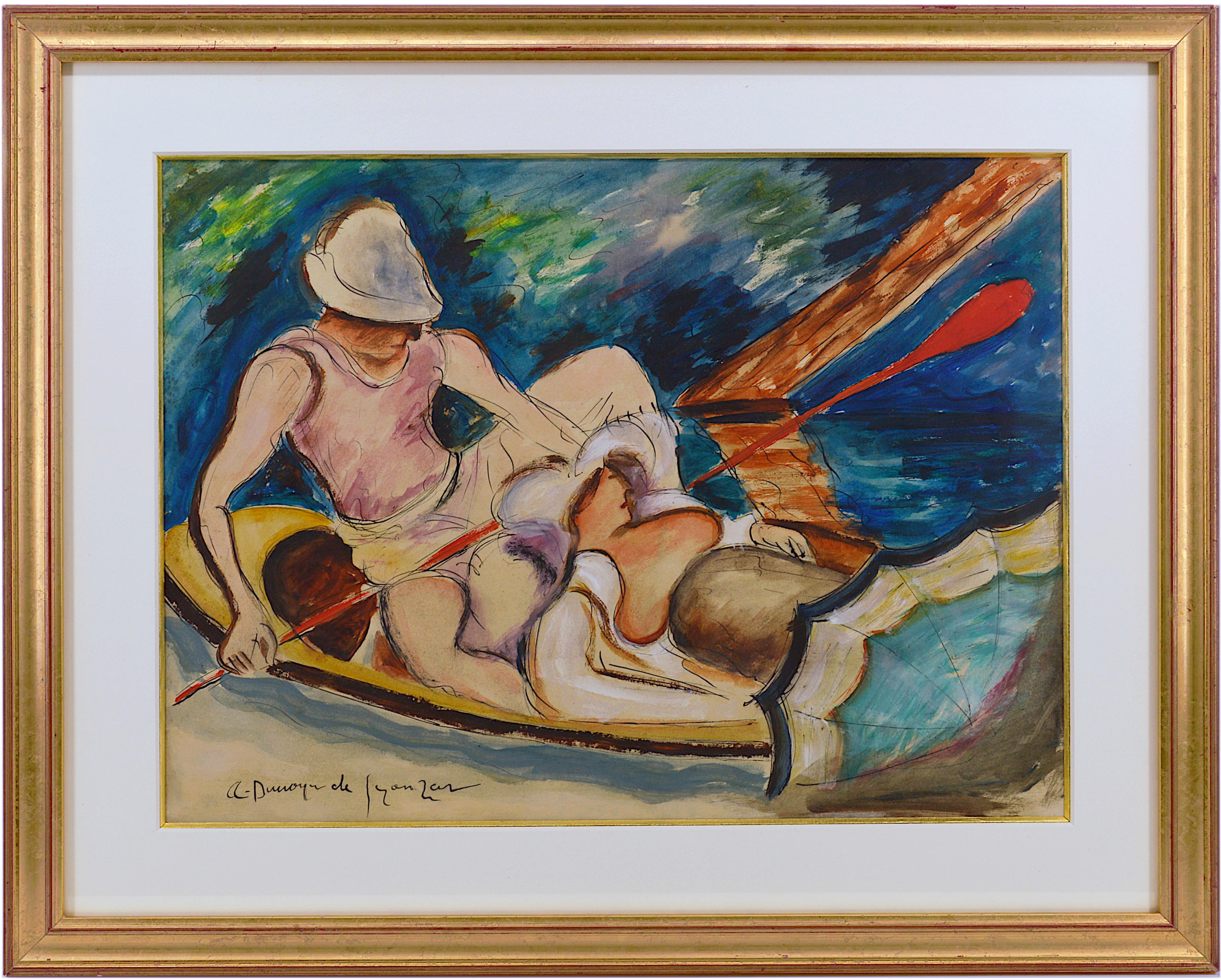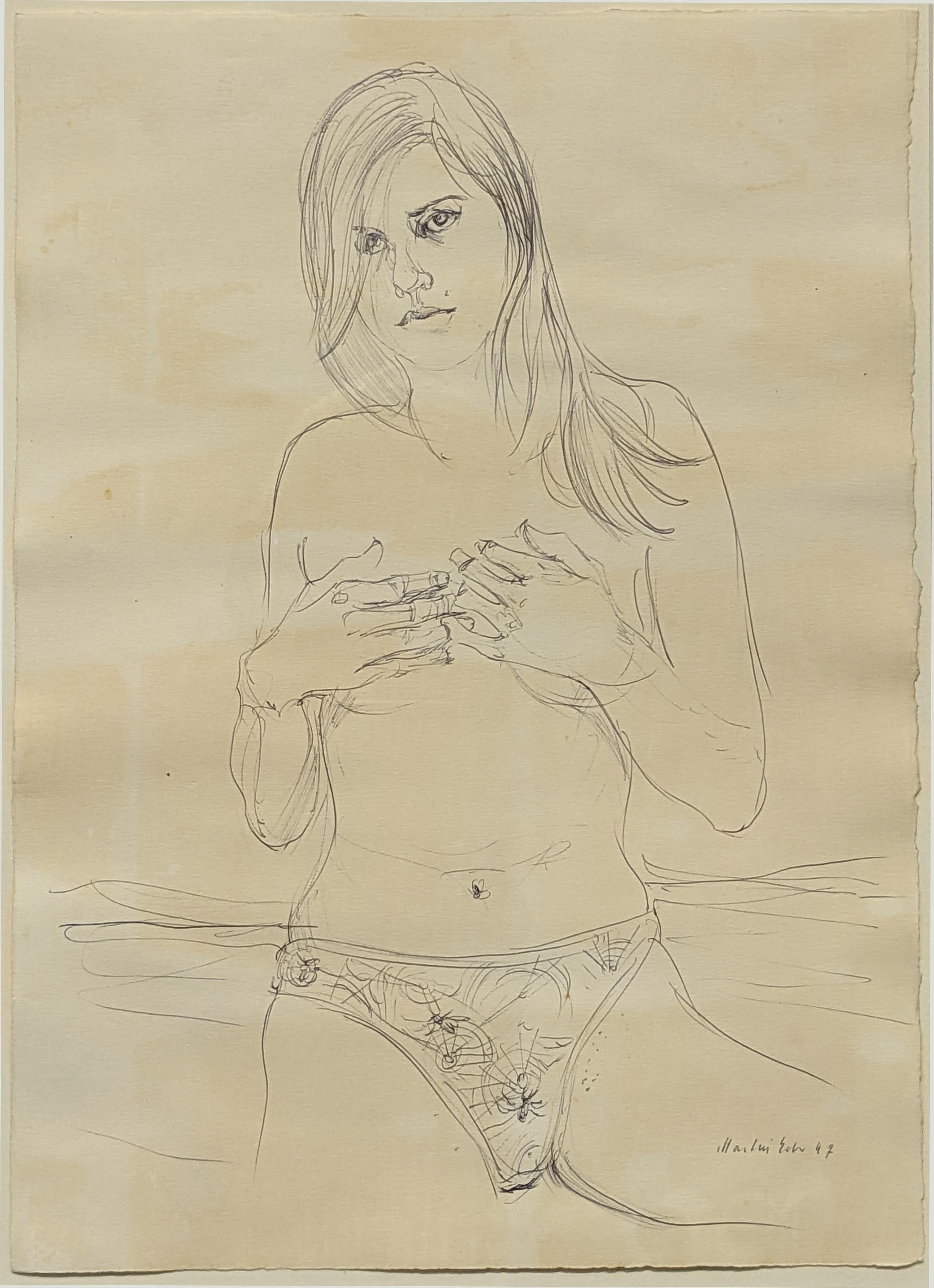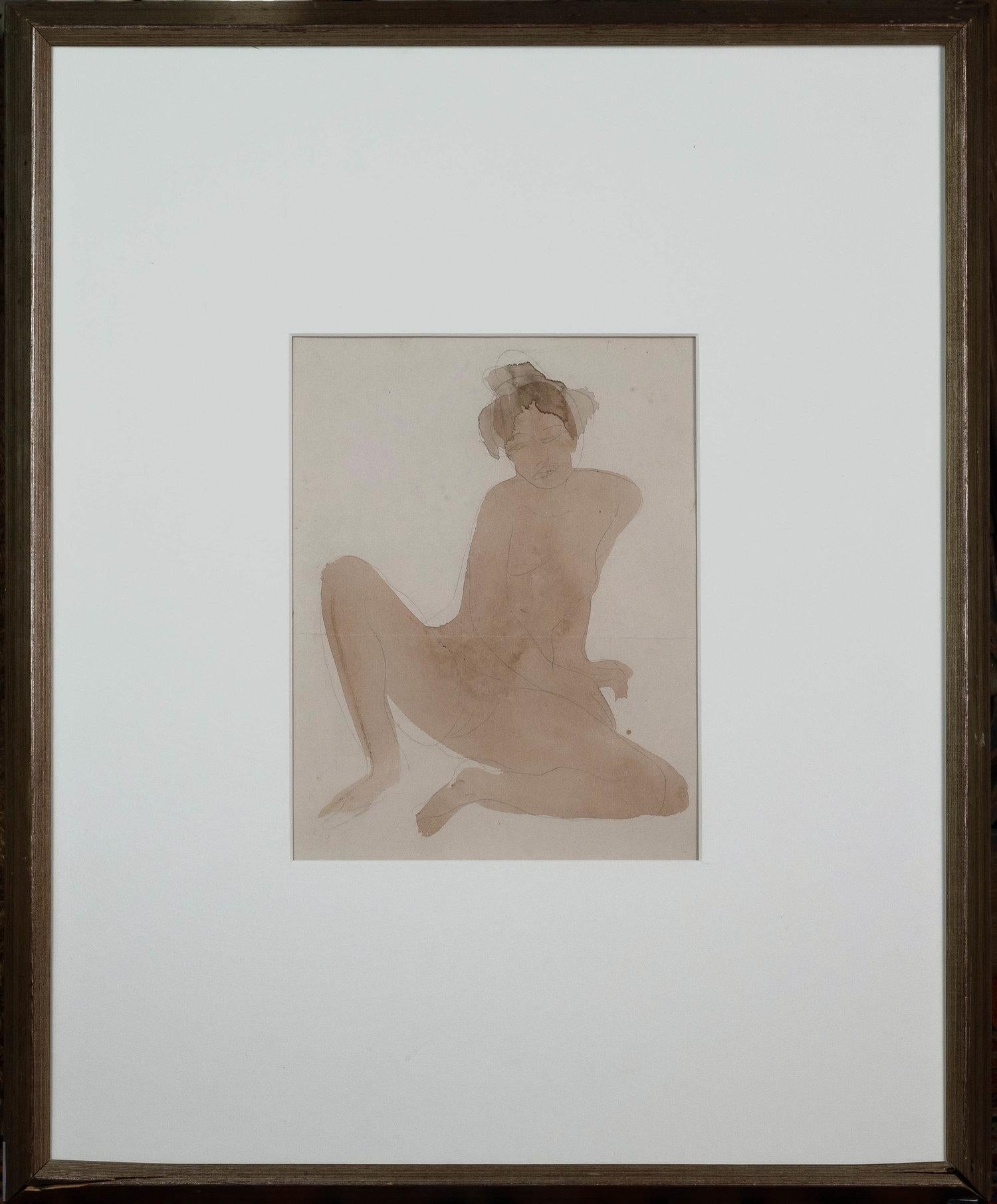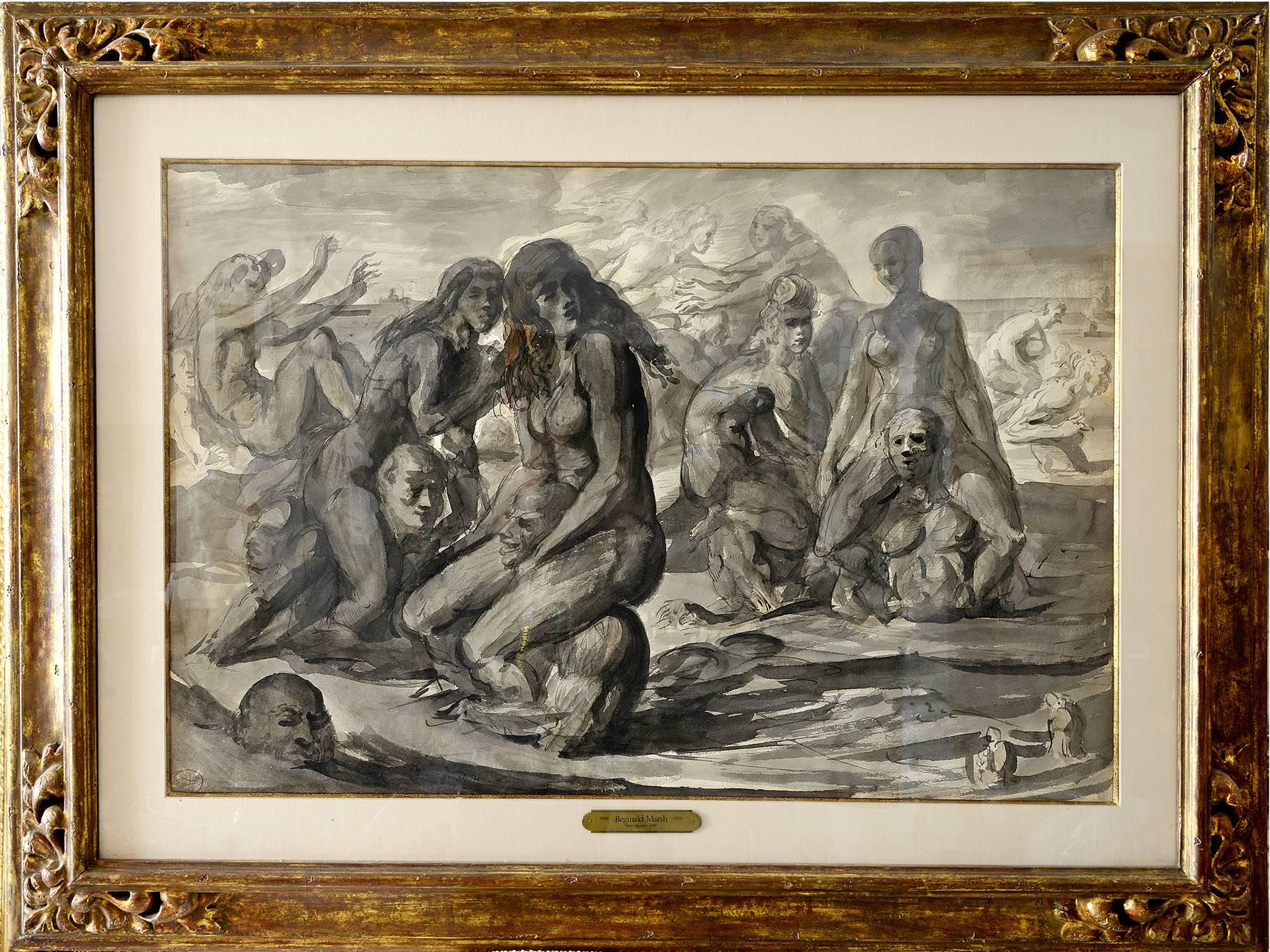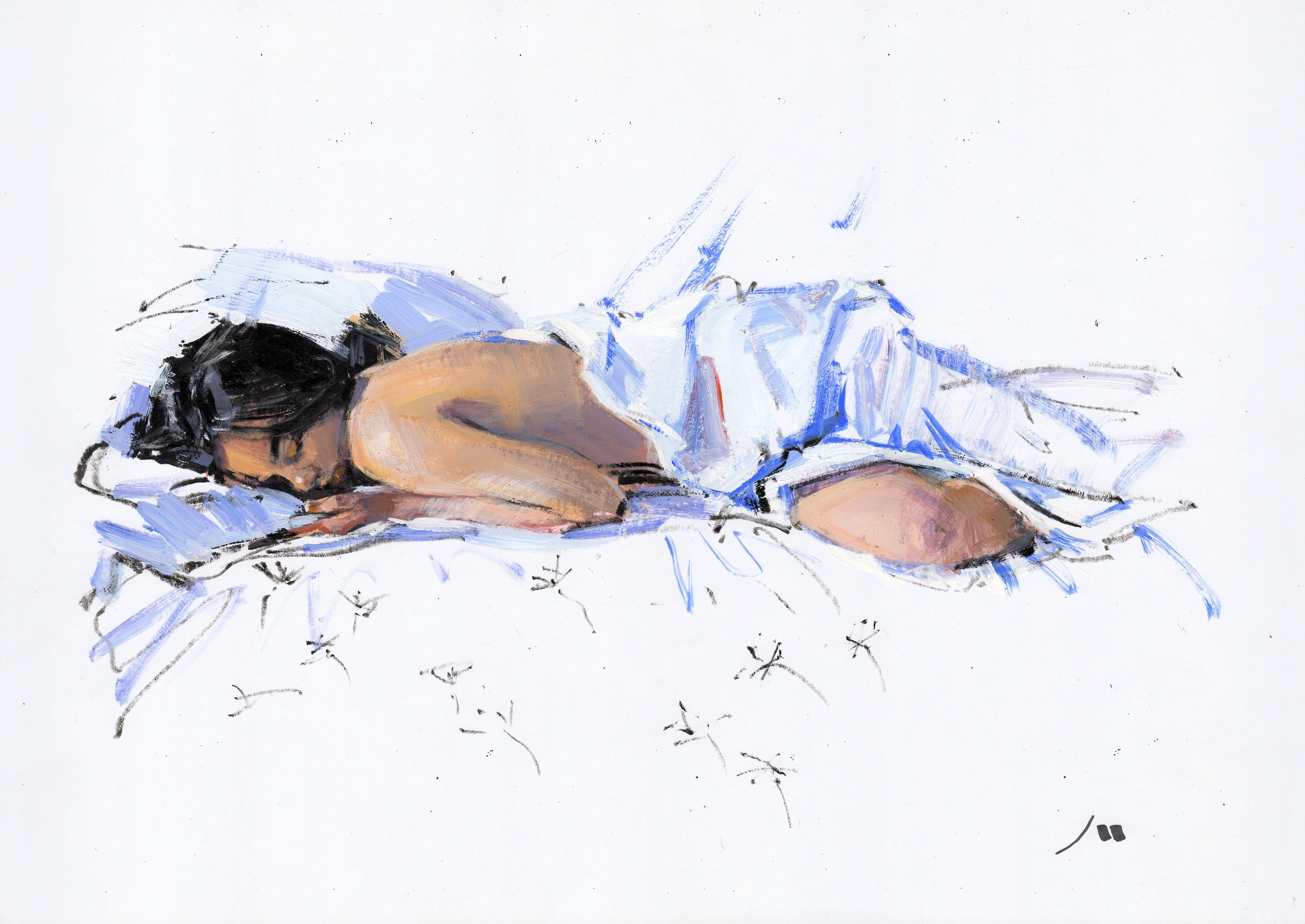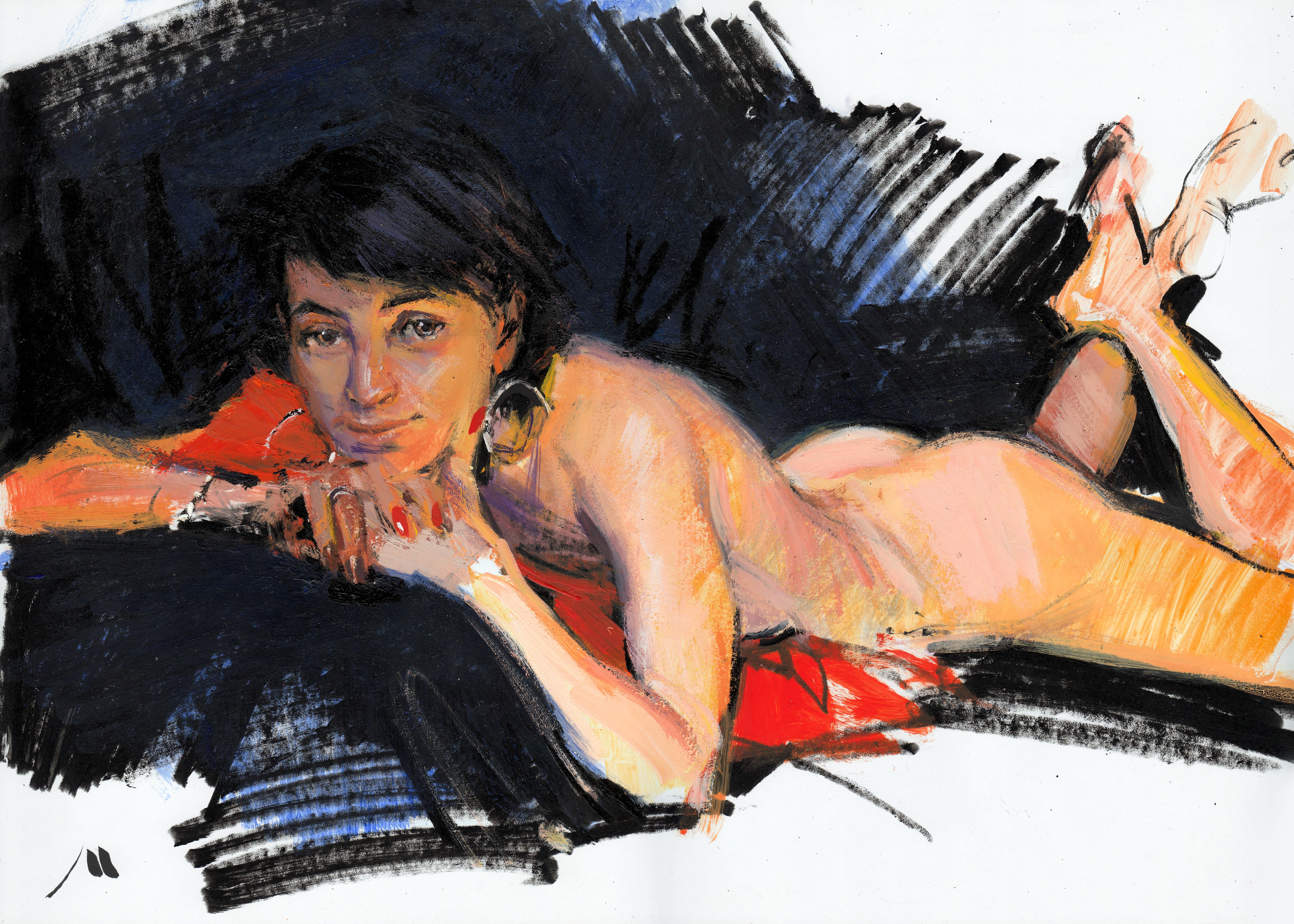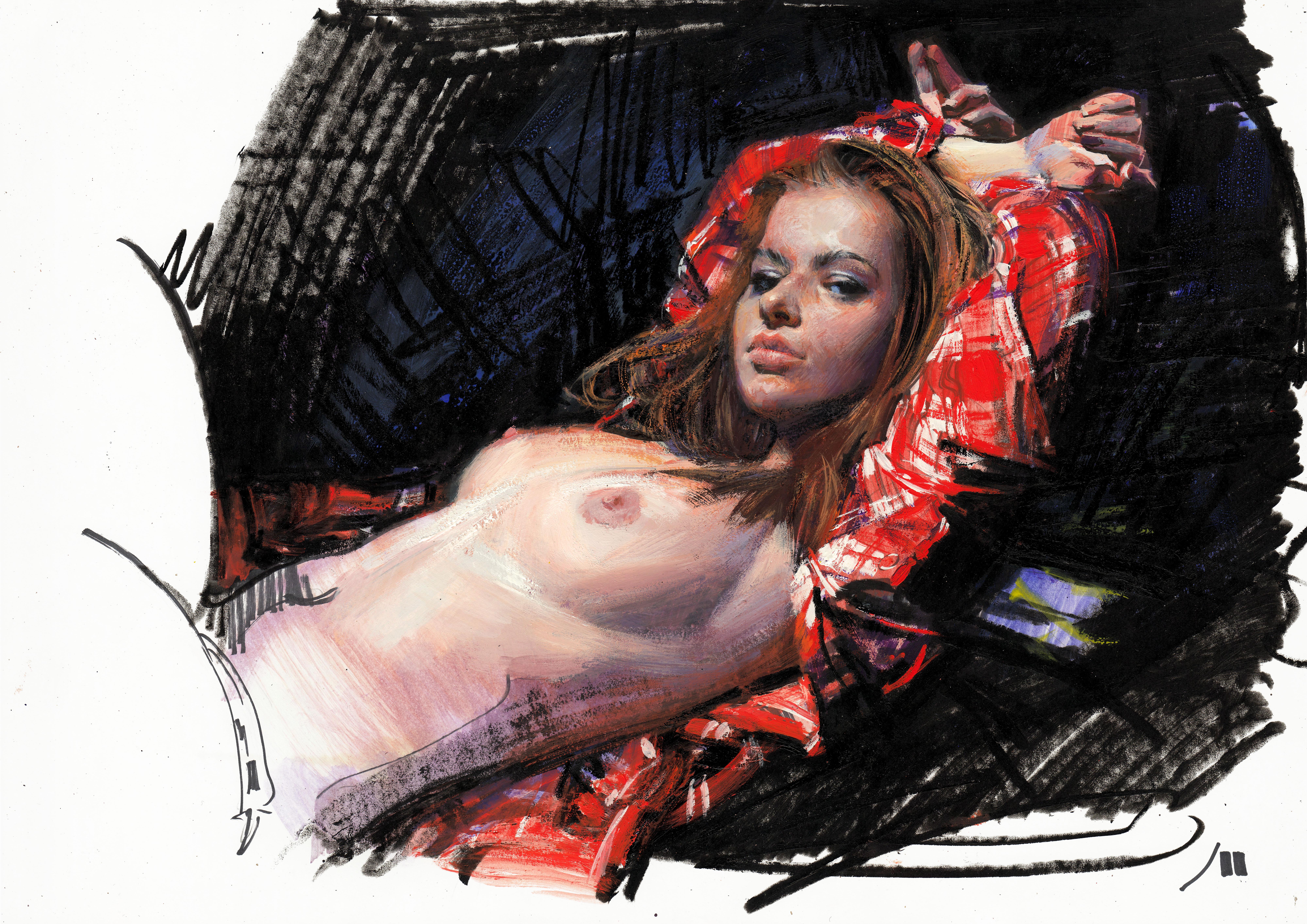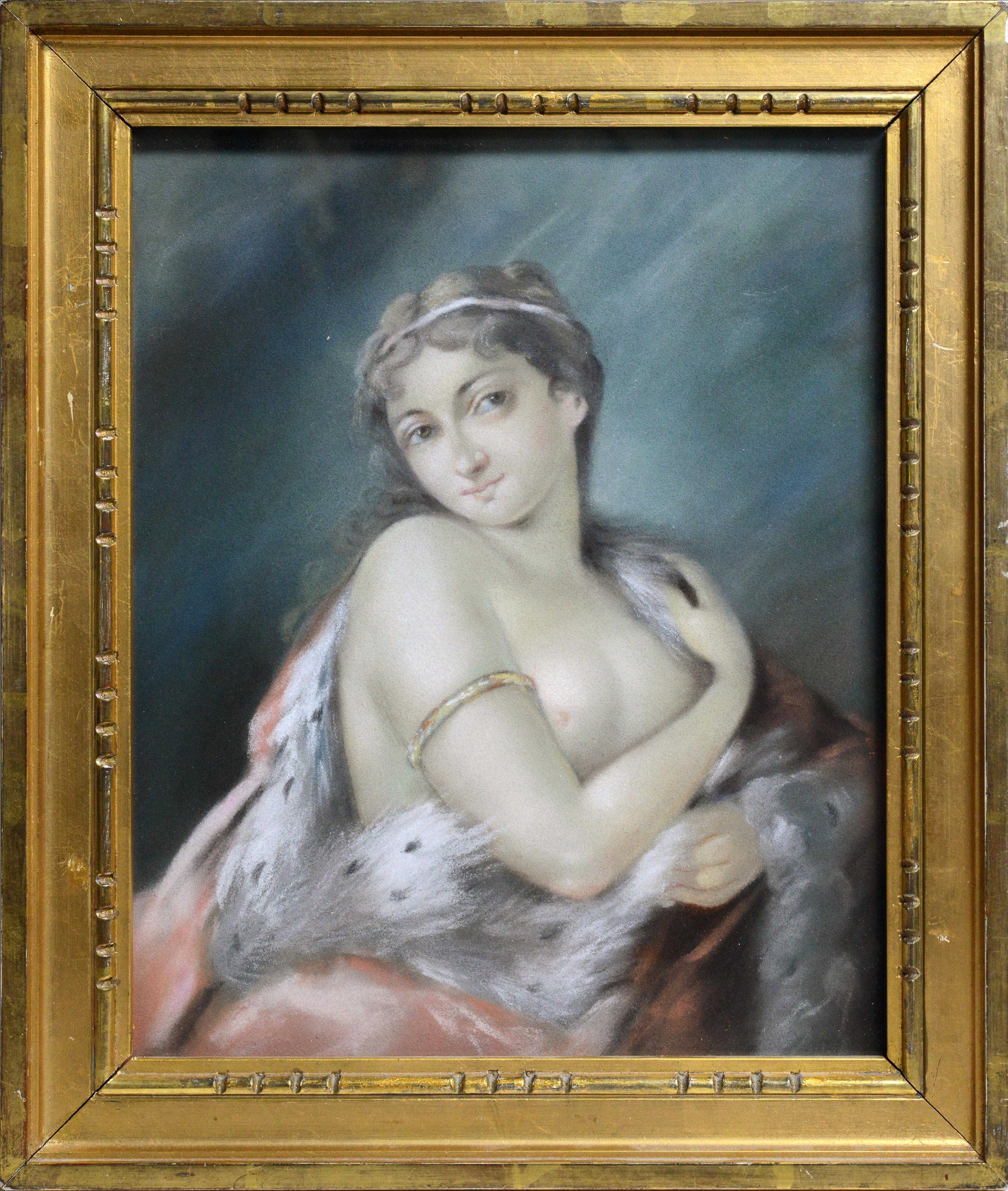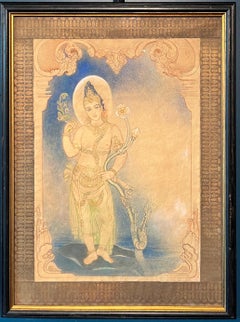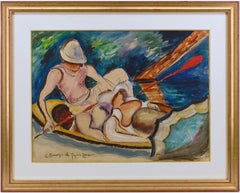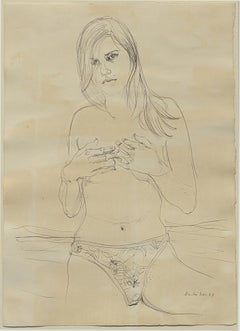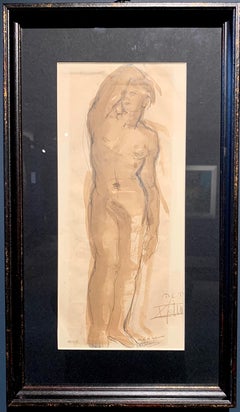
"Male Nude" Sepia, watercolor, 1943 cm. 15 x 36
View Similar Items
Want more images or videos?
Request additional images or videos from the seller
1 of 9
Unknown"Male Nude" Sepia, watercolor, 1943 cm. 15 x 361943
1943
About the Item
- Creation Year:1943
- Dimensions:Height: 18.51 in (47 cm)Width: 10.63 in (27 cm)
- Medium:
- Movement & Style:
- Period:
- Condition:
- Gallery Location:Torino, IT
- Reference Number:1stDibs: LU53737142232
About the Seller
4.9
Gold Seller
These expertly vetted sellers are highly rated and consistently exceed customer expectations.
Established in 1969
1stDibs seller since 2017
108 sales on 1stDibs
More From This SellerView All
- "Divinità induista" Tecnica mista su carta cm. 48 x 33 1920 caLocated in Torino, ITEccezionale disegno dei primi anni 20 stile Simbolista ,Orientalista Anche il Passepartout attorno all'opera è stato realizzato dall'artista. Louise JANIN nasce nel 1893, a Durham, ...Category
1920s Symbolist Figurative Drawings and Watercolors
MaterialsPastel, Watercolor
- "Modella" Matita cm. 50 x 70 1962By Edgardo CorbelliLocated in Torino, ITDisegno espressionista Figura femminile Artista Italiano che ha dedicato la vita all'arte Edgardo CORBELLI (Torino, 1918 – 1989) MUSEI Orléans, Francia, Musée Collégiale Saint Pierre le Puellier Salon de...Category
1960s Expressionist Figurative Drawings and Watercolors
MaterialsPaper, Graphite
$922 Sale Price58% Off - "Masha's fairy tales" watercolor cm. 17 x 22 1970By Marina Yevgenyevna UspenskayaLocated in Torino, ITChildren, illustrations, tales Marina Evgenevna USPENSKAYA (Moscow, 1925 – 2007) Marina Evgenevna Uspenskaya was born in Moscow. She graduated from the 1905 Art College, where she ...Category
1970s Realist Figurative Drawings and Watercolors
MaterialsPaper, Watercolor
$1,647 Sale Price25% Off - "Child with toys" watercolor cm. 24 x 30 1957By Marina Yevgenyevna UspenskayaLocated in Torino, ITChildren, Playing,1957,illustrations, children's room,Toys, Marina Evgenevna USPENSKAYA (Moscow, 1925 – 2007) Marina Evgenevna Uspenskaya was born in Moscow. She graduated from the...Category
1950s Realist Figurative Drawings and Watercolors
MaterialsPaper, Watercolor
$1,647 Sale Price25% Off - " Little pilots" Gouache and ink cm. 24 x 18 1982By Marina Yevgenyevna UspenskayaLocated in Torino, ITChildren, Playing,,illustrations, children's room,Toys, airplane Marina Evgenevna USPENSKAYA (Moscow, 1925 – 2007) Marina Evgenevna Uspenskaya was born in Moscow. She graduated fro...Category
1980s Realist Figurative Drawings and Watercolors
MaterialsPaper, Ink, Gouache
$1,318 Sale Price25% OffFree Shipping - "Study for decoration Moscow metro station" Kievskaya Tempera, Real socialismLocated in Torino, ITReal Socialism,Moscow,1970,Russia,Orange,Men at Work,Propaganda VIKTOR A. KONOVALOV (Uidol, Vladimir region 1912 – Moscow 1995) Russian painter and gr...Category
1950s Realist Figurative Drawings and Watercolors
MaterialsPaper, Tempera
You May Also Like
- "Boating on the Morin River"By André Dunoyer de SegonzacLocated in Saint Amans des cots, FRPen, ink, watercolor and wash on paper by André Dunoyer de Segonzac, France, 1922-1924. Boating on the Morin River. Measurements : with frame: 52.5x65x2 cm - 20.7x25.6x0.8 inches / without frame: 36.5x45 cm - 14.4x17.7 inches. Signed lower left "A. Dunoyer de Segonzac". Colors may vary slightly depending on your screen. The lighter band at the top and the bottom of the piece, visible in the first picture, is only due to the reflection in the protective glass. It does not exist. In its frame gilt with gold leaf and its protective glass. André Dunoyer de Segonzac was born in Boussy-Saint-Antoine (Essonne) July 7, 1884. After his schooling at high school Henri IV, as early as 1900, he attends classes at the National School of Fine Arts in Paris in free listener where he will befriend Charles Dufresne. In 1903, he enters the private studio of Luc-Olivier Merson. In 1907, he studies with Jean-Paul Laurens and attends the La Palette and Colarossi academies in Montparnasse. He meets Luc-Albert Moreau and Jean-Louis Boussingault with whom he shares a studio. His first drawings are published in 1908 in The Great Review and The Witness. Nearly indifferent to contemporary aesthetic revolutions, Dunoyer de Segonzac undertakes, with Jean-Louis Boussingault and Luc-Albert Moreau, to revive Gustave Courbet's realism by performing still lifes, nudes, landscapes, in a thick paste and masonry . In one of his letters to the painter Maurice Boitel, he wrote in the 1950s: "I have not forgotten the heroic period of the independents - when we were grouped around Paul Signac, the charming and valiant Maximilien Luce - in these barracks where the living and authentic Art was grouped outside the academic formulas - or literary and systematic tendencies - which were to lead to this abstract aesthetic of which the painting dies. " In 1908, he begins exhibiting at the Salon d'Automne and the Salon des Indépendants, with Paul Signac and Maximilien Luce. He befriends Apollinaire, Max Jacob, Raoul Dufy and Vlaminck. From this period, renting a house belonging to Signac, Dunoyer discovers the landscapes of Saint-Tropez, to which he will remain faithful and where he lived until the end of his life. He stays in Saint-Tropez only in the summer season. For the rest, he leads a real nomadic life, in search of the motive especially through the Île-de-France, the Grand Morin valley, Feucherolles, Chennevières-sur-Marne, Guyancourt, etc. "I also worked a lot on the banks of the Seine in Chatou, Bougival, Andrésy, Poissy and Triel that I particularly like, with its beautiful Gothic church that is reflected in the Seine and the high wooded hills that surround him", he will say. In 1910, he knows fashion designer Paul Poiret and meets Max Jacob, Raoul Dufy and Vlaminck. From 1910 to 1914, he travels to Italy, Spain, North Africa, and is interested in sport and dance (drawings of Isadora Duncan's Russian Ballets, 1911, The Boxers1910). From 1914 to 1918, mobilized in the infantry, he makes the war hardly, before being assigned to camouflage. He performs many war drawings, valuable for their artistic and documentary value. From 1919, he appears again in many exhibitions, including major Parisian salons. Nearly indifferent to contemporary aesthetic revolutions, Dunoyer de Segonzac undertakes, with Boussingault and Moreau, to revive Courbet's realism by performing still lifes, nudes, landscapes, in a thick and masonry paste. Enlisted in engraving by Jean Émile Laboureur, he makes nearly 1,600 brass plaques from 1919 to 1970. He was president of the Society of French painters-engravers. In 1921, he meets Paul Valéry, Léon-Paul Fargue and Jean Cocteau. In 1928, he makes a trip to America where he met with great success. In 1930, he becomes friend with Derain. In 1933 he receiveds the Carnegie Foundation of Pittsburgh Award and in 1934 the Venice Biennale. During the Occupation, in November 1941, he takes part in a "study trip" to Germany, organized by Arno Breker, accepting, like other artists of the most renowned, to visit the hotspots of German culture as well as artist workshops. After the war, he is exhibited in the best galleries...Category
1920s Realist Figurative Drawings and Watercolors
MaterialsPaper, Ink, Watercolor, Pen
- "The Dance, " Ludovico Lipparini, graphite, gouache, mythological, classicalLocated in Wiscasset, ME"The Dance" by Ludovico Lipparini is a beautifully rendered work on paper in the classical tradition using graphite and gouache and created in the f...Category
Early 19th Century Realist Figurative Drawings and Watercolors
MaterialsGouache, Paper, Graphite
- untitled / ohne TitelBy Martin EderLocated in New York, NYMartin Eder untitled work on paper executed in ballpoint pen with traces of watercolor. Ohne Titel Arbeit auf Papier, ausgeführt in Kugelschreiber mit Spuren von Aquarell. 2007Category
Early 2000s Realist Nude Drawings and Watercolors
MaterialsInk, Watercolor, Pen
- BallerinaBy Charles KifferLocated in San Francisco, CAThis artwork titled "Ballerina" c.1950 is a watercolor on paper by French noted artist Charles Kiffer, 1902-1992. It has the estate stamp of the artist on the back. The artwork size ...Category
Mid-20th Century Realist Figurative Drawings and Watercolors
MaterialsWatercolor
- Rare Rodin Watercolour & Pencil on Paper of a Seated Nude - The Cambodian DancerBy Auguste RodinLocated in London, GBAuguste RODIN (1840-1917) Seated Nude, Cambodian Dancer c. 1898 - 1900 Pencil and watercolour 11.5 x 9.3 inches; 25 x 20.5 inches, inc. frame Provenance: Christie's South Kensington: Wednesday, November 28, 2007 "It's very simple. My drawings are the key of my art." Rodin was an extraordinary creative artist and a prolific worker. After attending the “Petite École”, he worked in the studio of the ornamentalist Albert-Ernest Carrier-Belleuse, first in Paris, then in Brussels, where his skill in handling decorative subjects fashionable in the 18th century became apparent. His discovery of Michelangelo, during a visit to Italy in 1875-76, was a decisive moment in his career. Rodin would, in turn, break new ground in sculpture, paving the way for 20th-century art, by introducing methods and techniques that were central to his own artistic aesthetics. In 1906, King Sisowath of Cambodia visited France on an official state visit. It was on this visit that Rodin discovered the dancers of the Cambodian Royal Ballet and was inspired to draw and paint them over 150 times. They made a deep impression on the artist, as he confided to Georges Bourdon, in an article for the newspaper Le Figaro on 1 August 1906: “There is an extraordinary beauty, a perfect beauty, about these slow, monotonous dances, which follow the pulsating rhythm of the music… [The Cambodians] have taught me movements I had never come across anywhere before…” Originally seeing them in Paris he left everything suddenly to follow the dancers of the royal ballet to Marseille, from where they would embark on their return to Cambodia. In just one week, he made about one hundred and fifty drawings, re-transcribing or interpreting the ballet poses, with an obvious fascination for the arms and hands of the dancers. These drawings were later highlighted with watercolour, creating coloured harmonies of a rare refinement. The first performance of the Cambodian Royal Ballet took place in the context of the Colonial Exhibition in Marseille. Sisowath 1st had just been crowned King of Cambodia when he undertook the first trip ever to be made by a Cambodian sovereign to France, which had controlled Cambodia since June 1884. This official visit occurred at the height of French colonial expansion. Previously, the Universal Exhibition of 1900 had attracted 48 million visitors! The organisers realised what a tremendous impact this event made on the public, and it was soon adopted as the main tool for colonial propaganda. At the exhibition in Marseilles, the area devoted to Indochina was the largest of the seven sections. When Auguste Rodin met the troupe of dancers for the first time in July 1906, during their brief visit to Paris for an exceptional performance at the Pré Catalan...Category
19th Century Realist Figurative Drawings and Watercolors
MaterialsWatercolor
- Water Sports - Nude Swimmers and Bathers at Coney IslandBy Reginald MarshLocated in Miami, FLHistorically, academic artists have always featured the central figures in their composition in a prominent light with the background figures being darker. In water sports...Category
1940s Realist Figurative Drawings and Watercolors
MaterialsWatercolor, India Ink
Recently Viewed
View AllMore Ways To Browse
Realist Nude Male
Nude Lesbian
Male Nude Chalk Drawings
Vintage Cannabis Art
Francoise Gilot Etching
Eugene Leroy
Elmer Batters
Raphael Orlando
Cretan Icon
Gaston Coppens On Sale
Dmitrii Drugakov
Louis Nadalini On Sale
A. Delamaire On Sale
Paul Cadmus Photo
Teresa Gigi Davis
William Conger Art
Garcia Ponce
Kosta Stojanovitch
